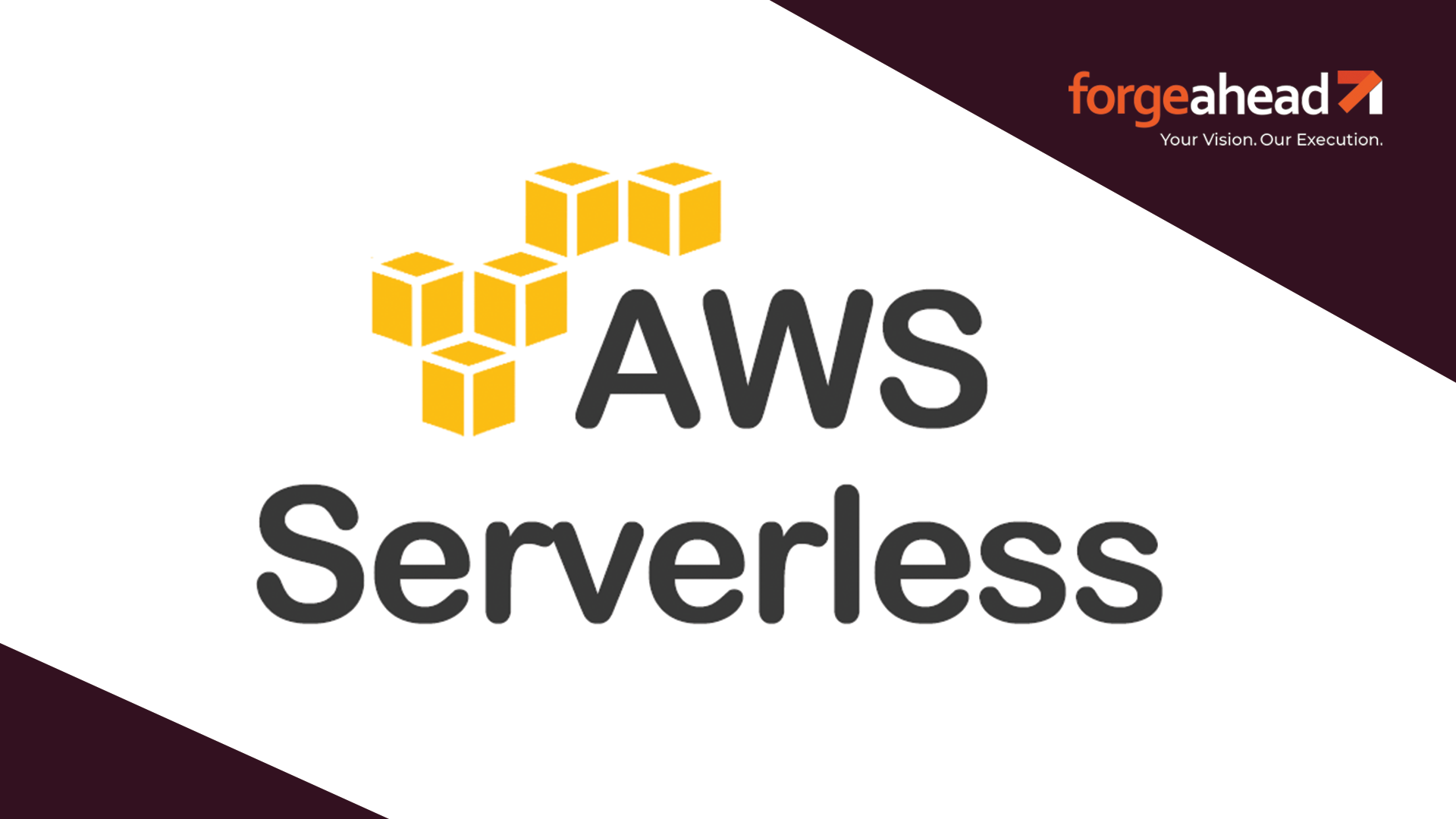In the evolving landscape of cloud computing, AWS Serverless has emerged as a pivotal technology, reshaping how applications are developed and managed. Its significance stems from its ability to enhance efficiency, scalability, and cost-effectiveness, marking a significant shift from traditional server-based models to more dynamic cloud environments.
The move to serverless requires a new understanding of application architecture, where the management of servers is no longer a concern, and scalability and cost are handled more efficiently. Yet, this transition brings complexities, particularly in grasping the nuances of serverless computing and integrating it seamlessly into existing workflows. Additionally, there are concerns about cost implications and technical adjustments. This blog aims to guide you through the fundamentals of AWS Serverless, simplifying its concepts and offering practical insights for successful implementation, addressing these challenges head-on and unlocking the full potential of serverless architecture.
Understanding Serverless Computing
At its core, serverless computing is about running applications without the need to manage servers. It’s a cloud-computing model where the cloud provider automatically manages the allocation and provisioning of servers. When we say ‘serverless’, it doesn’t mean there are no servers involved; rather, it means that the responsibility of handling servers falls away from the developers. They can focus solely on writing code, while the cloud provider takes care of the underlying infrastructure, scaling it up or down as needed.
Serverless vs. Traditional Server-Based Models
To appreciate the serverless model, it’s essential to understand how it differs from traditional server-based architectures:
- Server Management: In traditional models, managing servers, either physical or virtual, is a key responsibility. This involves ensuring they are running, performing maintenance, and scaling them based on demand. Serverless architecture, however, abstracts this away, allowing developers to deploy code without worrying about the underlying servers.
- Scalability: Traditional architectures often require manual scaling, which can be both time-consuming and complex. Serverless computing, on the other hand, offers automatic scaling. The cloud provider automatically adjusts computational resources to match the demand of the application, often in real-time.
- Cost Model: Traditional server models typically involve a fixed cost, where you pay for the server capacity regardless of usage. Serverless computing adopts a pay-as-you-go model, where costs are based on actual usage – you pay for the compute time your application consumes.
- Deployment and Operations: Deploying applications in traditional models can be complex, involving various steps from setting up the server to configuring the environment. In serverless computing, deployment is simplified; you upload your code, and the cloud provider handles the rest.
For those accustomed to traditional server-based models, the shift to serverless can seem daunting due to its different approach to application deployment and management. However, it opens up a more efficient and scalable way to handle applications, especially for businesses looking to innovate and grow in today’s fast-paced technological landscape. The key is understanding that serverless computing streamlines operations, reduces overhead, and can lead to significant cost savings and operational agility.
Launching Your Journey with AWS Serverless
Taking the first steps in AWS Serverless can be an exciting venture. It opens up a realm where infrastructure management becomes more streamlined and less burdensome. For beginners, setting up a basic serverless application involves understanding a few key AWS services and navigating the initial setup process.
Understanding Essential AWS Serverless Services
To get started, familiarise yourself with these AWS services that form the backbone of serverless architecture:
- AWS Lambda: This is the core of AWS Serverless. Lambda lets you run code without provisioning or managing servers. You simply upload your code, and AWS Lambda takes care of everything needed to run and scale it with high availability.
- Amazon API Gateway: This service allows you to create, publish, maintain, monitor, and secure APIs. When Amazon API Gateway combined with Lambda, it can route HTTP requests to your Lambda function, making it easy to build serverless web applications.
- Amazon S3: Known for its data storage capabilities, S3 can also host static web resources like HTML, CSS, and JavaScript files, making it a perfect companion for serverless applications.
Setting Up a Basic Serverless Application
Step 1:
Create a Lambda Function: Start by creating a new Lambda function in the AWS Management Console. You can choose a pre-defined blueprint or author your code in the console or upload a ZIP file.
Step 2:
Set Up API Gateway: Next, set up an API Gateway to trigger your Lambda function. This involves creating a new API and connecting it with the Lambda function to handle specific HTTP requests.
Step 3:
Deploy Static Resources to S3: If your application has static web content, upload these files to an S3 bucket and configure it for web hosting.
Integration and Implementation Concerns
Integration with Existing Systems: Integrating serverless architecture into existing systems can raise concerns about compatibility and workflow disruptions. To mitigate this, start with non-critical functions or standalone components. This gradual approach helps in understanding the integration patterns without impacting existing operations significantly.
Addressing Cold Start Concerns: One common concern with Lambda is the ‘cold start’ issue, where initiating a function can take longer the first time. To address this, keep your functions warm by invoking them regularly or use provisioned concurrency in Lambda.
Monitoring and Debugging: Utilise AWS CloudWatch for monitoring your serverless components. It provides logs, metrics, and event data to help you troubleshoot and optimise your application.
By following these steps and understanding the key services, you can confidently begin your journey into AWS Serverless. Remember, the path to mastering serverless is iterative – start small, learn the patterns, and gradually expand your serverless footprint as you gain more confidence and understanding.
Benefits of Embracing AWS Serverless
AWS Serverless has become a game-changer for many organisations, from spry startups to established enterprises, thanks to its array of benefits. Let’s explore these advantages and see how they translate into real-world successes.
Scalability: Expanding as You Grow
One of the most significant benefits of AWS Serverless is its inherent scalability. Serverless architectures like AWS Lambda automatically scale your application by running code in response to each trigger. This means your application can handle a single request just as efficiently as it can manage thousands. For instance, a fintech startup using AWS Serverless can effortlessly scale during high-traffic events like Black Friday, without the need to provision extra servers or resources.
Operational Efficiency: Streamlined and Simplified
Operational efficiency is another major draw. With serverless, the heavy lifting of server management, including maintenance, updates, and scaling, is handled by AWS. This shift allows teams to focus more on developing features and enhancing user experience rather than worrying about infrastructure. A notable example is a media company that leveraged AWS Lambda and Amazon API Gateway to streamline content delivery, significantly reducing the time to market for new features.
Cost Reduction: Pay for What You Use
The pay-as-you-go pricing model of serverless computing means you only pay for the computer time you consume. This model represents a stark contrast to traditional architectures where you pay for server capacity, regardless of usage. For instance, a small e-commerce business using AWS Serverless noticed a substantial reduction in operational costs as they only paid for the resources used during customer transactions, avoiding the expense of idle server time.
Real-World Impact Across Industries
The flexibility and efficiency of AWS Serverless are not just theoretical but have practical implications across various industries. For startups, it means a lower barrier to entry and the ability to experiment without heavy investment. For larger enterprises, serverless offers a pathway to digital transformation, enabling them to innovate faster and respond more effectively to market demands.
AWS Serverless presents a compelling proposition for businesses of all sizes. It offers scalability that matches your growth, enhances operational efficiency by reducing the burden of infrastructure management, and optimises costs with its usage-based pricing. These benefits collectively make AWS Serverless an attractive option for any organisation looking to innovate and grow in today’s digital landscape.
Decoding the Cost Structure of AWS Serverless
Understanding the cost implications is crucial when adopting AWS Serverless. The cost structure in serverless architecture significantly differs from traditional hosting models, presenting both challenges and opportunities for financial efficiency.
Serverless Costing: Pay-as-You-Go
The most distinctive aspect of AWS Serverless, particularly AWS Lambda, is its pay-as-you-go pricing model. This means you’re billed for the exact amount of resources consumed by your application, calculated down to the millisecond of compute time. Unlike traditional models where you pay for server capacity irrespective of usage, serverless ensures you only pay for what you use. This model is particularly beneficial for applications with fluctuating traffic, as it aligns costs directly with demand.
Comparing with Traditional Models
In contrast, conventional hosting models typically involve fixed costs. Whether it’s on-premises servers or cloud-based instances, you pay for server capacity and often for the maximum expected load, which can lead to underutilization and higher costs. Serverless architecture eliminates these inefficiencies, as there are no costs for idle capacity.
Long-Term Financial Benefits
The long-term financial benefits of serverless architecture are considerable. Firstly, the reduction in operational overheads—no server maintenance or administration—is a direct cost saving. Secondly, the ability to scale precisely with demand means you’re not overpaying during low-traffic periods. This can lead to significant cost reductions over time, especially for applications that experience variable traffic.
Optimising Serverless Costs
Despite its benefits, managing costs in serverless environments requires careful planning. Employ strategies like setting budgets and alerts in AWS to monitor usage. Consider using AWS Lambda’s Provisioned Concurrency for predictable performance, which can also be cost-effective for certain use cases.
While AWS Serverless offers a more flexible and potentially cost-effective model, understanding its cost structure is key to maximising its benefits. By aligning costs with actual usage and adopting cost optimization strategies, businesses can leverage serverless computing to achieve both operational efficiency and financial prudence.
Tackling Technical Challenges in AWS Serverless
While AWS Serverless offers numerous advantages, it also presents unique technical hurdles. Understanding these challenges and how to navigate them is key for ensuring optimal performance and seamless integration with other AWS services.
Addressing Cold Starts
One of the most talked-about issues in the serverless world is the ‘cold start’ problem. A cold start occurs when a serverless function is invoked after a period of inactivity, leading to a slight delay in response time. Although this might not be critical for all applications, for those requiring real-time responsiveness, it can be a concern. To mitigate this, you can:
- Keep your functions warm by scheduling regular invocations
- Optimise your code for faster execution
- Use Provisioned Concurrency in AWS Lambda, which keeps a specified number of functions initialised and ready to respond immediately
Optimising Application Performance
Performance optimization in serverless architecture requires a different approach. Since you don’t manage the servers, your focus shifts to optimising the code and architecture. Here are a few strategies:
- Write efficient, lightweight code
- Break down your application into smaller, more manageable functions
- Monitor and fine-tune performance using AWS CloudWatch
Seamless Integration with AWS Services
Integrating serverless applications with other AWS services can sometimes be challenging, especially for complex architectures. However, AWS provides various tools to facilitate this integration. For instance:
– AWS SAM (Serverless Application Model) helps in defining, deploying, and managing serverless applications with ease.
– Step Functions allow you to coordinate multiple AWS services into serverless workflows.
Ensuring Smooth User Experience
Finally, the end goal of overcoming these technical hurdles is to ensure a smooth and delightful user experience. This involves:
- Regular testing and monitoring to detect and fix issues promptly
- Employing user feedback mechanisms to continually improve performance and functionality
By addressing these technical challenges proactively and adopting best practices for optimization and integration, you can harness the full potential of AWS Serverless. This not only enhances application performance but also ensures a seamless and engaging experience for your users.
Your Next Steps
In this blog, we’ve navigated the essentials of AWS Serverless, demystifying its concepts and outlining practical steps for implementation. We covered the fundamental aspects: understanding serverless computing, setting up a basic application, the benefits of scalability and cost-effectiveness, tackling cost implications, and overcoming technical challenges. AWS Serverless represents a paradigm shift towards more efficient, scalable, and cost-effective cloud computing, ideal for businesses seeking agility and innovation.
If you’re looking to explore further or need expert guidance for your serverless journey, don’t hesitate to reach out to ForgeAhead. Join us here for daily tips, news about AWS serverless and cloud innovation.
FAQs
1. What is AWS Serverless?
AWS Serverless is a cloud computing model where the cloud provider manages server allocation and scaling, allowing developers to focus on code.
2. How does AWS Serverless handle scalability?
AWS Serverless automatically scales applications by adjusting resources in real-time based on traffic, ensuring efficient handling of varying loads.
3. Is AWS Serverless cost-effective compared to traditional models?
Yes, AWS Serverless is often more cost-effective as it follows a pay-as-you-go model, where you pay only for the resources your application consumes.
4. What are common challenges in AWS Serverless?
Common challenges include handling cold starts, optimising application performance, and integrating with other AWS services.
5. Where can I get more information or help with AWS Serverless?
AWS offers extensive documentation, and there are numerous community forums and expert services available for additional support and guidance.





